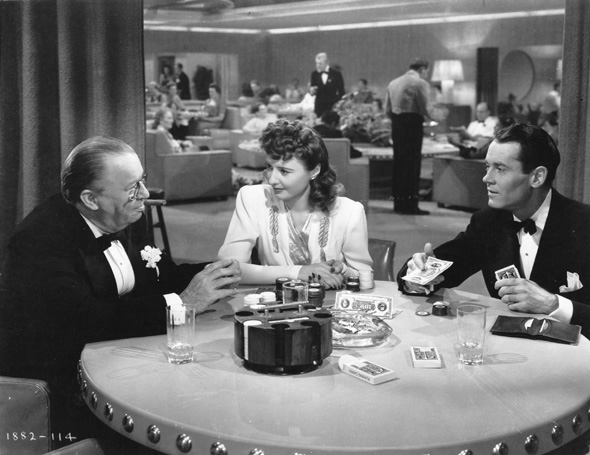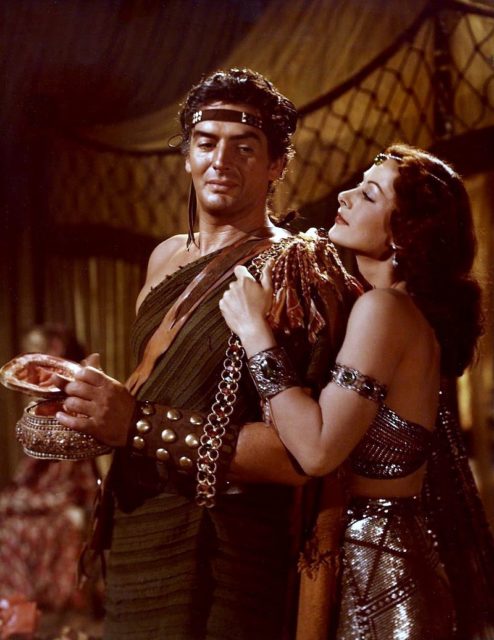Over a 50-year-long career, costume designer Edith Head waved a magic wand over Hollywood, winning a record eight Academy Awards and receiving 35 nominations. Edith, born in 1897, earned hundreds of film credits as she designed for just about every famous actress in Hollywood, from Bette Davis to Grace Kelly.
The women she dressed might look far from effortlessly gorgeous before donning Edith’s creations, but afterward, the effect was extraordinary. In her 1967 book How to Dress for Success, Edith laid down her ground rules for being stylish. She wrote: “Throughout my career I have used clothes to turn drudges into princesses, plain Janes into glamour girls, frumps into fashion plates. As one of my star friends insists, ‘If Cinderella had Edith Head, she’d never have needed a Fairy Godmother.’ ”
I was fortunate enough to encounter Hollywood’s Fairy Godmother in person. Edith, after decades spent working for the major film studios, had added another feather to her cap, doing home-sewing patterns for Vogue Patterns under the Very Easy Very Vogue American Designer Original collection in the late 1970s. The patterns had an incredible range in their appeal, from jackets and wrap blouses for working women to sexy slip dresses and one-shoulder gowns for glam galas. Edith’s clever mind conjured kimono sleeve cardigans and off-the-shoulder frocks that look current today.
During that time, I worked for Vogue Patterns, and I met the acclaimed costume designer on her tours to promote the line at fashion shows and public appearances at fabric stores, like the beautiful Home Silk Shops founded in Los Angeles by Simon and Rose Pepper in 1939. Standing at the podium and sharing her ideas about glamour while highlighting her pattern line, Edith was incredibly entertaining. She dispensed her fashion wisdom with a twinkle in her eye.

Edith Head was born and raised in California. She earned a Bachelor of Arts degree in letters and sciences with honors in French at the University of California, Berkeley. After graduating, she taught French and art. When she was 26, without directly relevant experience, she was hired as a costume sketch artist at Paramount Pictures, and off she went.
The list of actresses Edith Head has worked with is like a stroll down the Hollywood Walk of Fame (Edith Head’s star, by the way, is at 6504 Hollywood Boulevard). Each actress is more famous than the next: There’s Mae West (She Done Him Wrong), Veronica Lake (Sullivan’s Travels), and Barbara Stanwyck (The Lady Eve, to name just one of the films they did together). She gained notoriety wrapping Dorothy Lamour in a sarong for The Hurricane and set off a prom-gown fever by putting Elizabeth Taylor in a breathtaking lilac blossom-covered tulle ballgown design with daring décolletage in A Place in the Sun. Every teen girl in 1951 wanted to have one like it for the big night.
Edith had a long and fruitful partnership with Alfred Hitchcock. She dressed Kim Novak in Vertigo and Tippi Hedren in The Birds and Marni. Grace Kelly, playing a fashion editor in Rear Window, looked spectacular in Head’s white silk wrapover halterneck, startling moviegoers when she removed her celadon Balenciaga-inspired jacket—because the top was backless. Shocking!
One star that fans always asked Edith about was Audrey Hepburn, who rode a bike in a white blouse and full skirt done by the designer in Roman Holiday. Controversy still rages about whether Edith Head or designer Hubert de Givenchy was behind the famous black square-neck bowed Sabrina dress from the movie of the same name.
Gloria Swanson was ready for her close-up in a sparkly one-shoulder creation in Sunset Boulevard in 1950, and Bette Davis famously uttered the phrase, “Buckle your seatbelts, it’s going to be a bumpy night” in a black Edith Head dress that didn’t fit perfectly; the actress dropped the shoulders, giving it—and her character Margo Channing—a devil-may-care attitude.

Never one to mince words, Edith would cut right to the chase when asked how to dress fashionably: “Think of yourself as a product,” she would say. The petite (5 foot 1 inch tall) powerhouse was savvy—she had to be working in the movie business—and knew how to sell an idea to the many Hollywood studio moguls and movie stars she encountered as head costume designer at Paramount.
A shrewd marketer, Edith was happy to tell every woman exactly how to go about improving her looks: by reading the practical wisdom in her books (the first one in 1959 was titled The Dress Doctor) or buying one of the home sewing patterns she endorsed and licensed.

Her Vogue Pattern collection wasn’t the first time she’d been involved in spreading a little stardust on the average woman: Her first home-sewing patterns were tied to movies she worked on, like a Star Pattern that had a photo of actress Jane Wyman in Here Comes the Groom (1951) wearing a shapely two-piece suit-dress with a peplum top and slim skirt on the front. “Design by EDITH HEAD” appeared below the black and white movie still.
By the 1960s, a picture of Edith appeared on a 65 cent ADVANCE pattern with “Original design by EDITH HEAD of Paramount Studios Hollywood” boldfaced below it. Today, unused star-studded patterns from an early era such as these can sell for up to $75 online.

In so many ways, the dynamo designer was ahead of the curve: In the 1960s, an era that was all about peace, love, and coming together, she presaged today’s current obsession with branding oneself on Facebook, Twitter, and Instagram. She said, “In order to achieve success, you have to sell that product, so start right now thinking of how you can improve it.” Her ‘Three C’s System” (Cover-up, Conceal, Camouflage) could “cancel out quite a few years for almost any woman who just reached 39, 49 or 59 for the third time.”
Her events were mobbed, and even then, when she was in her eighties, she had the stamina and drive of a showman, welcoming questions from the fans who waited in line after the fashion show to have her sign their patterns with her distinctive, bold signature.
After she signed the last autograph, always with a flourish, and I’d finished packing the clothes in a big wardrobe trunk to send to the next show, we’d head up to Edith’s wonderful old adobe hacienda, which she called Casa Ladera, in Coldwater Canyon in L.A. The house, which had a pool and tennis court, was built in the early 1930s by actor Robert Armstrong, a leading man who was in the 1933 original King Kong with Fay Wray.
Edith would say, “I don’t know about you, but I’d like a drink,” and she’d pour two glasses of Jack Daniels on the rocks. We would sit on the patio and finish up the day with a toast to the future.
Edith Head was a person who never looked back.

